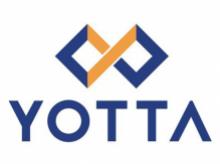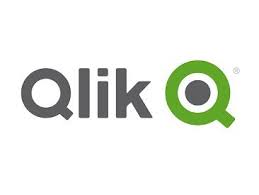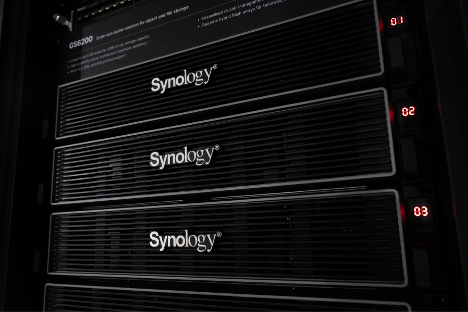Escalating Data Breach Disruption Pushes Costs to New Highs: IBM
IBM released its annual Cost of a Data Breach Report revealing the global average cost of a data breach reached $4.88 million in 2024, as breaches grow more disruptive and further expand demands on cyber teams. Breach costs increased 10% from the prior year, the largest yearly jump since the pandemic, as 70% of breached organizations reported that the breach caused significant or very significant disruption.
Lost business and
post-breach customer and third-party response costs drove the year-over-year
cost spike, as the collateral damage from data breaches has only intensified.
The disruptive effects data breaches are having on businesses are not only
driving up costs, but are also extending the after-effect of a breach, with
recovery taking more than 100 days for most of the small number (12%) of
breached organizations that were able to fully recover.
The 2024 Cost of a
Data Breach Report is based on an in-depth analysis of real-world data breaches
experienced by 604 organizations globally between March
2023 and February 2024. The research,
conducted by Ponemon Institute, and sponsored and analyzed by IBM, has been
published for 19 consecutive years and has studied the breaches of more than
6,000 organizations, becoming an industry benchmark.
Some key findings
in the 2024 IBM report include:
· Understaffed Security
Teams – More organizations faced severe
staffing shortages compared to the prior year (26% increase) and observed an
average of $1.76 million in higher breach costs than those with
low level or no security staffing issues.
· AI-Powered
Prevention Pays Off – Two out of three organizations
studied are deploying security AI and automation across their security
operation center (SOC). When these technologies were used extensively across
prevention workflows organizations incurred an average $2.2 million less in breach costs, compared to those
with no use in these workflows – the largest cost savings revealed in the 2024
report.
· Data Visibility
Gaps – Forty percent of breaches involved
data stored across multiple environments including public cloud, private cloud,
and on-prem. These breaches cost more than $5 million on
average and took the longest to identify and contain (283 days).
"Businesses
are caught in a continuous cycle of breaches, containment and fallout response.
This cycle now often includes investments in strengthening security defenses
and passing breach expenses on to consumers – making security the new cost of
doing business," said Kevin
Skapinetz, Vice President, Strategy and Product Design, IBM Security. "As
generative AI rapidly permeates businesses, expanding the attack surface, these
expenses will soon become unsustainable, compelling business to reassess
security measures and response strategies. To get ahead, businesses should
invest in new AI-driven defenses and develop the skills needed to address the
emerging risks and opportunities presented by generative AI."
Security staffing
shortages drove up breach costs
More than half of the organizations
studied had severe or high-level staffing shortages last year and experienced
significantly higher breach costs as a result ($5.74 million for high levels vs. $3.98
million for
low levels or none). This comes at a time when organizations are racing to
adopt generative AI (gen AI) technologies, which are expected to introduce new
risks for security teams. In fact, according to a study from the IBM Institute for
Business Value, 51% of business leaders surveyed were concerned with
unpredictable risks and new security vulnerabilities arising, and 47% were
concerned with new attacks targeting AI.
Mounting staffing
challenges may soon see relief, as more organizations stated that they are
planning to increase security budgets compared to last year (63% vs. 51%), and
employee training emerged as a top planned investment area. Organizations also
plan to invest in incident response planning and testing, threat detection and
response technologies (e.g., SIEM, SOAR and EDR), identity and access
management and data security protection tools.
Hacking the clock
with AI
The report found that 67% of organizations deployed security AI and automation
– a near 10% jump from the prior year – and 20% stated they used some form of
gen AI security tools. Organizations that employed security AI and automation
extensively detected and contained an incident, on average, 98 days faster than
organizations not using these technologies. At the same time, the global
average data breach lifecycle hit a 7-year low of 258 days – down from 277
days the prior year and revealing that these technologies may be helping put
time back on defenders' side by improving threat mitigation and remediation
activities.
Shorter breach
lifecycles can also be attributed to the increase in internal detection: 42% of
breaches were detected by an organization's own security team or tools compared
to 33% the prior year. Internal detection shortened the data breach lifecycle
by 61 days and saved organizations nearly $1
million in breach costs compared to those disclosed by an attacker.
Data insecurities
fuel intellectual property theft
According to the 2024 report, 40% of breaches involved data stored across
multiple environments and more than one-third of breaches involved shadow data
(data stored in unmanaged data sources), highlighting the growing challenge
with tracking and safeguarding data.
These data
visibility gaps contributed to the sharp rise (27%) in intellectual property
(IP) theft. Costs associated with these stolen records also jumped nearly 11%
from the prior year to $173 per record. IP may grow
even more accessible as gen AI initiatives push this data and other highly proprietary
data closer to the surface. With critical data becoming more dynamic and active
across environments, businesses will need to reassess the security and access
controls surrounding it.
Other key findings
in the 2024 Cost of a Data Breach Report include:
· Stolen credentials
topped initial attack vectors – At 16%,
stolen/compromised credentials was the most common initial attack vector. These
breaches also took the longest to identity and contain at nearly 10 months.
· Fewer ransoms paid
when law enforcement is engaged – By
bringing in law enforcement, ransomware victims saved on average nearly $1 million in breach costs compared to those who
didn't – that savings excludes the ransom payment for those that paid. Most
ransomware victims (63%) who involved law enforcement were also able to avoid
paying a ransom.
· Critical
infrastructure organizations see highest breach costs - Healthcare, financial services, industrial, technology and energy
organizations incurred the highest breach costs across industries. For the 14th year in a row, healthcare participants saw the costliest breaches
across industries with average breach costs reaching $9.77 million.
· Breach costs passed
to consumers - Sixty-three percent of organizations
stated they would increase the cost of goods or services because of the breach
this year – a slight increase from last year (57%) – this marks the third
consecutive year that the majority of studied organizations stated they would
take this action.

































Leave A Comment